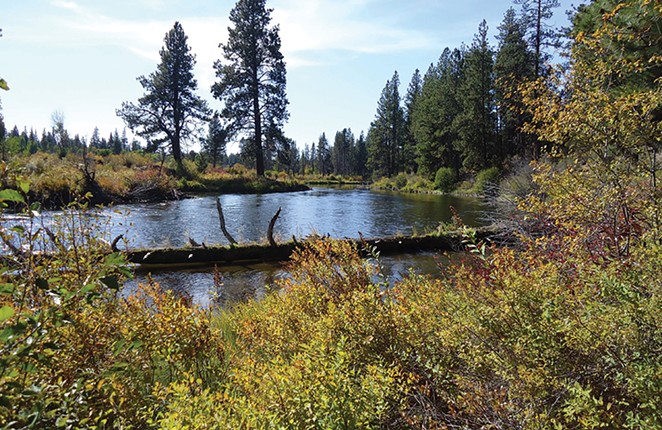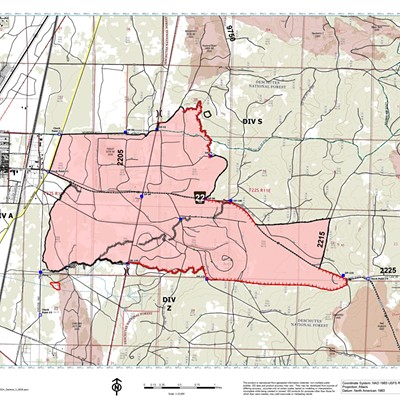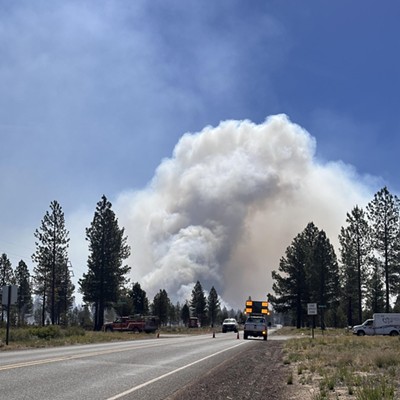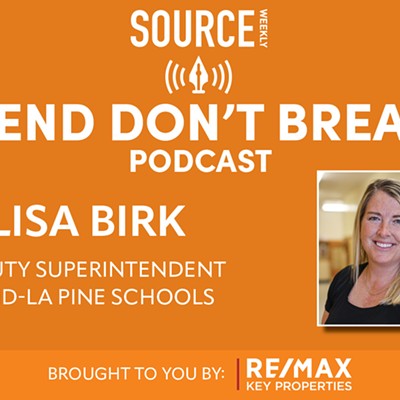Recent data from the U.S. Department of Agriculture, which provides a complete count of farms and ranches in the state and its various counties, shows that many Central Oregon irrigators are hobby farmers.
The USDA conducts a census every five years and looks at land use, operator characteristics, production practices, income and expenditures. The 2022 census data, released in February, confirmed that many irrigators in the area are not considered commercial farmers under the USDA's guidelines. According to the USDA, "even small plots of land – whether rural or urban – count if $1,000 or more of such products were raised and sold, or normally would have been sold, during the census year."
The data, which citizen activist Yancy Lind examined and interpreted in a blog post, reported that Deschutes County had 1,572 farms in total. While there wasn't available data showing the number of farms that had less than $1,000 of raised and sold products, the majority of farms, 764, had less than $2,500 in sales. Some 1,167, or 74%, had revenues of less than $10,000, and the average farm lost $8,571. This, Lind said, confirms to him that most local irrigators are not farmers.
The idea that hobby farmers make up a large chunk of the local irrigators is not new. Since many district patrons aren't commercial farmers, many use their water for hobby farms or to water their lawns, in order to keep their water rights, given the "use it or lose it" rules.
This situation causes problems for both real commercial farmers and the Deschutes River. "Without a doubt, all of us have the right to pursue the hobby of our choice if it does no harm. Unfortunately, harm is being done," said Lind. "Our rivers, lakes, fish and wildlife are suffering, groundwater levels are dropping, real agriculture is unable to get sufficient water to meet their needs, and taxpayers are massively subsidizing all irrigation district patrons regardless of how the water is being used."
According to Kate Fitzpatrick, the executive director of Deschutes River Conservatory, there are a lot of interests that need water, and that includes rivers. This, she said, is a result of the state giving away more surface water rights for irrigation than exists in the rivers in the summer. Rivers need more water to make up for that loss.
"We're having some really dramatic negative impacts on the river because of all these withdrawals, especially here during the drought," said Lind. "Even though we've got a good snowpack this year, it's still a drought."
According to the Deschutes River Conservancy, 86% of the streamflow from the Deschutes River in Bend is diverted for agricultural use during irrigation season. Another 2% of the water is provided for municipal use.
One possible solution that Lind noted is a process called "water banking." This, he said, allows irrigators to either permanently or temporarily sell their water rights to people who need it.
"The state doesn't differentiate between who needs the water the most, as long as you have a water right for it," said Fitzpatrick. DRC creates voluntary, non-regulator mechanisms to try to reallocate water from willing sellers to willing buyers.
"What we're working on right now with irrigation districts and other partners in the basin is setting up a basin-wide water bank, where we make it easier for those who didn't want to use their water," said Fitzpatrick.
Currently, the organization already pays people not to use their water, and protects it in-stream while satisfying the state beneficial use requirements, protecting a landowners' water rights.
"We're trying to expand that out," said Fitzpatrick. In these cases, willing water right holders would be paid for their water, which could then go to farms that need it or back into the river.
The organization also focuses on conservation projects, like canal piping and farm efficiency, incentivizing to use tools that can help save water. "There's a lot of work going on. People have a high interest in upgrading their systems and piping canals," said Fitzpatrick. These tools can work especially well for farms that need to conserve water.
"Many farmers in our region are compelled to invest in efficiency upgrades due to the ongoing drought and unreliability of water delivery in order to stay viable as businesses. The kinds of upgrades depend on the farm's size and the crop they grow," read a statement from the High Desert Food and Farm Alliance.
Farmers often have to put up an upfront investment into equipment and upgrades, which can be difficult for some. To help local farmers deal with the cost, the HDFFA has an On-Farm Efficiency Grant that provides financial support to infrastructure, equipment and services that will lead to more efficient farming practices.
"Shouldn't water use support real agriculture and our current economy?" asked Lind. "We are facing a climate crisis and can no longer afford the waste. It's time for fundamental change."
























